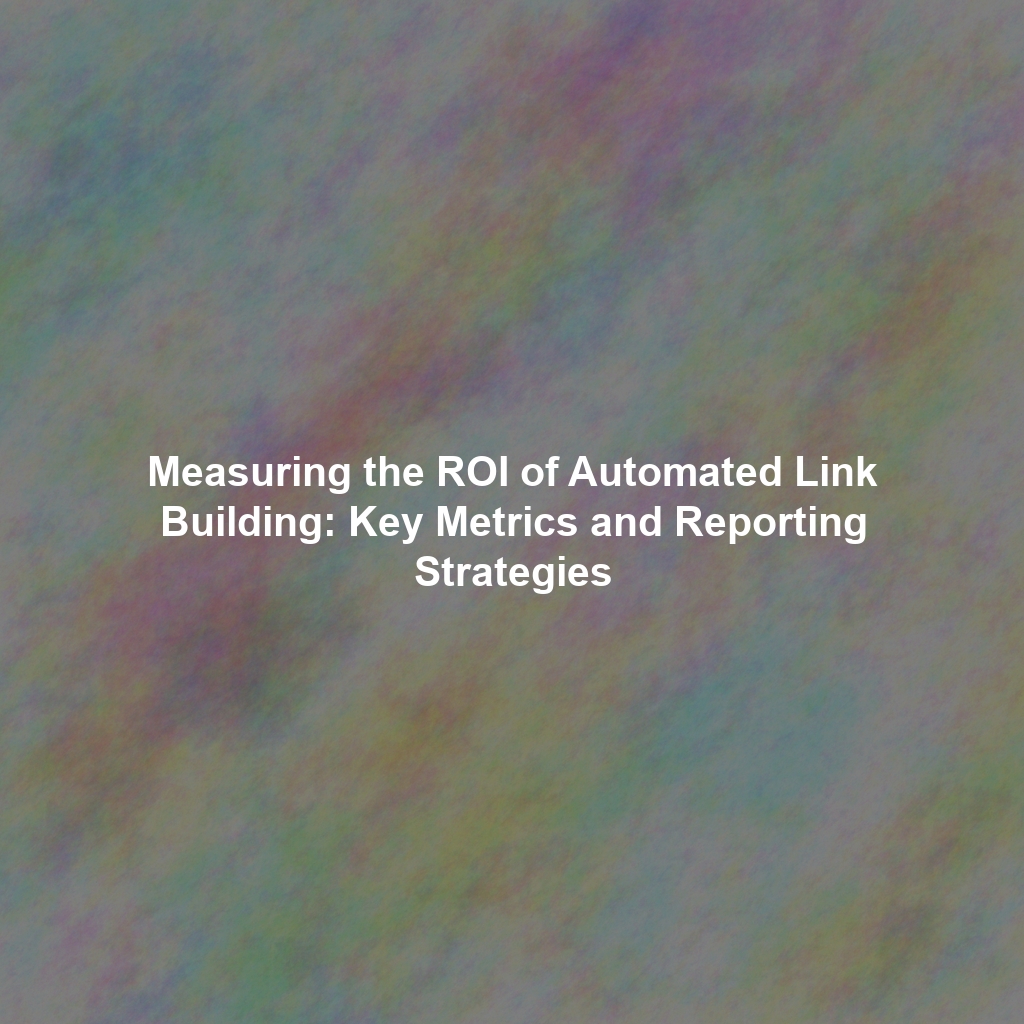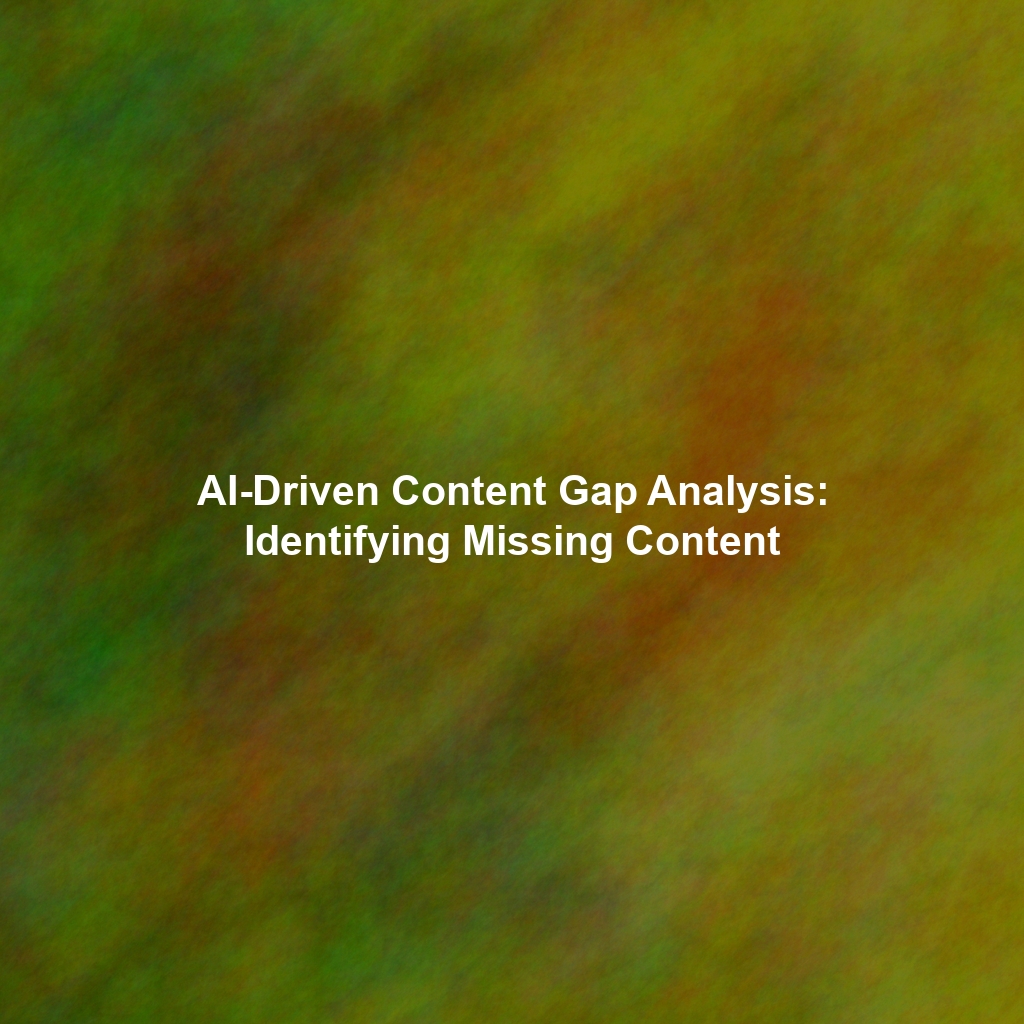In today’s competitive digital landscape, link building remains a cornerstone of a successful SEO strategy. While manual outreach and relationship building are invaluable, the increasing scale and demands of link acquisition often necessitate the adoption of automation. However, implementing automated link building strategies without a clear understanding of their return on investment (ROI) is like navigating uncharted waters. This article delves into the essential metrics for tracking the effectiveness of automated link building campaigns, explores how to set up accurate tracking mechanisms, and outlines strategies for generating comprehensive reports that demonstrate value to stakeholders. Ultimately, we’ll empower you to optimize your campaigns based on data-driven insights, ensuring your investment yields tangible results.
Why Measuring ROI in Automated Link Building is Crucial
Before diving into specific metrics, it’s essential to understand why measuring ROI is paramount. It’s not just about justifying the expense of automation tools; it’s about:
- Accountability: Demonstrating the value of your efforts and ensuring you’re getting the desired outcomes.
- Optimization: Identifying what’s working and what’s not, allowing you to refine your strategy for maximum impact.
- Budget Allocation: Making informed decisions about where to invest your resources for the greatest return.
- Stakeholder Buy-In: Providing concrete evidence of the positive impact of link building, securing continued support and budget.
Key Metrics for Tracking Link Building Automation Performance
Effective ROI measurement hinges on tracking the right metrics. Here are some of the most important:
Referral Traffic
This is arguably the most direct indicator of a link’s value. By tracking the traffic coming directly from the links you’ve acquired, you can see how many users are actually clicking through to your site. Tools like Google Analytics allow you to segment traffic sources and identify referral traffic from specific domains. Look for patterns: Are certain types of sites driving more qualified traffic? Are certain anchor texts proving more effective?
How to Track: Google Analytics (Acquisition > All Traffic > Referrals)
Conversion Rates
Referral traffic is valuable, but ultimately, you want that traffic to convert. Track conversion rates for visitors arriving via your newly acquired backlinks. Are they signing up for your email list, making a purchase, or filling out a contact form? High conversion rates indicate that the links are attracting a relevant audience.
How to Track: Google Analytics (Goals or E-commerce Tracking)
Domain Authority (DA) & Domain Rating (DR)
While not a direct measure of ROI in terms of immediate revenue, these metrics from tools like Moz (DA) and Ahrefs (DR) provide a snapshot of your website’s overall authority and credibility. A sustained increase in DA/DR following a link building campaign suggests that your efforts are strengthening your site’s overall profile and, consequently, its search engine rankings.
How to Track: Moz’s Link Explorer, Ahrefs Site Explorer, SEMrush
Keyword Rankings
One of the primary goals of link building is to improve keyword rankings. Monitor your target keywords before, during, and after your campaign. Significant improvements in rankings indicate that your new links are contributing to better visibility in search engine results pages (SERPs).
How to Track: SEMrush, Ahrefs, Google Search Console
Number of Referring Domains
A growing number of referring domains pointing to your website is a strong signal to search engines that your site is becoming more authoritative and valuable. Track the trend over time to see the cumulative impact of your link building efforts.
How to Track: Ahrefs, SEMrush, Moz Link Explorer
Website Traffic (Overall)
While referral traffic shows direct impact, don’t neglect overall website traffic. A successful link building campaign should contribute to a broader increase in organic traffic over time, even beyond the immediate referral sources.
How to Track: Google Analytics (Audience > Overview)
Setting Up Accurate Tracking Mechanisms
Accurate data is the foundation of effective ROI measurement. Here’s how to set up your tracking mechanisms:
Implement UTM Parameters
Use UTM parameters in your backlinks to accurately track referral traffic in Google Analytics. These parameters allow you to identify the source, medium, and campaign associated with each link. For example: yourwebsite.com/?utm_source=website&utm_medium=link&utm_campaign=spring_campaign.
Utilize Link Tracking Tools
Consider using dedicated link tracking tools to monitor link performance, identify broken links, and track anchor text variations. Some tools also provide alerts when new links are discovered.
Regularly Monitor Google Search Console
Google Search Console provides valuable insights into your website’s performance in search, including indexed pages, crawl errors, and keyword rankings. Use it to monitor the impact of your link building efforts on your organic search visibility.
Generating Comprehensive Reports
To effectively communicate the value of your automated link building efforts to stakeholders, you need to create clear and concise reports. Here’s what to include:
Executive Summary
Start with a brief overview of the campaign’s goals, strategies, and key results. Highlight the most significant achievements and ROI figures.
Key Metrics Summary
Present a summary of the key metrics tracked, including referral traffic, conversion rates, DA/DR, keyword rankings, and the number of referring domains. Use charts and graphs to visualize trends over time.
Link Acquisition Details
Provide a list of the new links acquired, including the source website, anchor text used, and any relevant metrics associated with each link (e.g., DA/DR of the referring domain).
Analysis and Insights
Offer your interpretation of the data. Explain what worked well, what didn’t, and why. Identify areas for improvement and provide recommendations for future campaigns.
ROI Calculation
Calculate the ROI of the campaign based on the metrics tracked. This could involve attributing a monetary value to increased traffic, conversions, or keyword rankings. Be transparent about your methodology and assumptions.
Optimizing Campaigns Based on Data-Driven Insights
The real power of ROI measurement lies in its ability to inform and optimize your link building strategies. Use the data you collect to:
- Refine your target audience: Identify the types of websites that are driving the most qualified traffic and focus your efforts on acquiring links from similar sources.
- Optimize your anchor text strategy: Test different anchor text variations to see which ones perform best in terms of referral traffic and keyword rankings.
- Adjust your content strategy: Create content that is highly valuable and linkable, and tailor it to the interests of your target audience.
- Prioritize high-authority domains: Focus on acquiring links from websites with high DA/DR, as these links tend to have the greatest impact on your SEO performance.
Conclusion
Measuring the ROI of automated link building is not just a formality; it’s a strategic imperative. By tracking the right metrics, setting up accurate tracking mechanisms, and generating comprehensive reports, you can demonstrate the value of your efforts to stakeholders, optimize your campaigns for maximum impact, and ultimately drive meaningful results for your business. Embracing a data-driven approach to link building ensures that your investments are not only effective but also accountable, contributing to sustainable growth and long-term success.
 Skip to content
Skip to content

